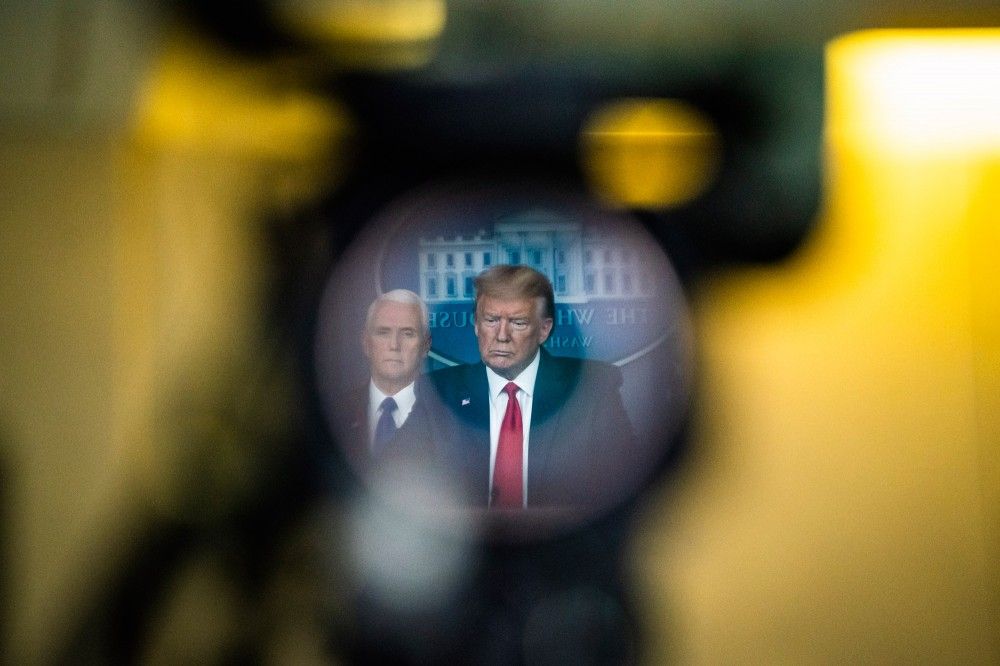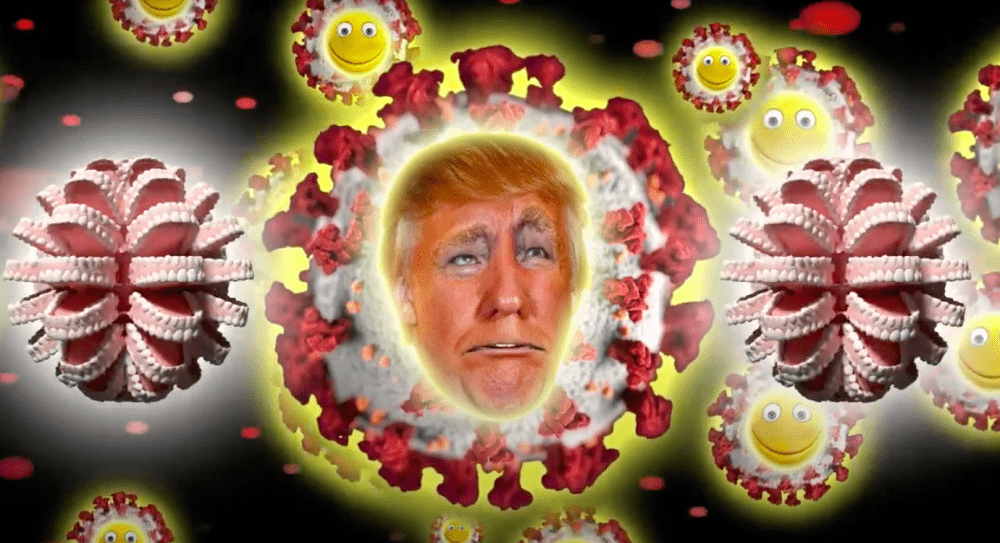
Broadcasting Trump's Coronavirus Briefings Live Is a Danger to Public Health
WASHINGTON — It took practically the entire 2016 presidential campaign for many in the media, including the powerful TV networks, to realize that ’s casual attitude toward truth and facts required a new approach to covering him.
The first step was obvious: Stop airing his rallies live. The Trump rally was — and remains — a uniquely dangerous blend of misinformation, fear-mongering, grievance-airing, schoolyard taunting, and the occasional incitements to violence. (“And you know what? The audience swung back. And I thought it was very, very appropriate. He was swinging, he was hitting people, and the audience hit back. And that’s what we need a little bit more of.”) And during the 2016 campaign, TV networks and other news outlets broadcast Trump’s rallies as they happened, in the moment, without filter or editing. By one measure, during the 2016 campaign, Trump received $6 billion of the best kind of free media a candidate could ask for.
Eventually, media organizations came to their senses and put in place any number of creative approaches to countering Trump’s lies and bluster. They cut away from his rallies to correct misinformation. They used their chyrons (those text boxes at the bottom of the TV screen) to fact-check him in real-time. In some cases, they stopped airing his rallies altogether.
Now, in the middle of the new pandemic, news organizations risk making the same mistake all over again. Instead of the Trump campaign rally, it is the president’s daily press briefing about the pandemic that poses a unique threat to reliable information and public trust in the middle of a global and fast-spreading crisis.
Trump’s Friday press briefing put this circus on full display.
Asked a straightforward question about how he would assure fearful Americans in this moment, Trump attacked the reporter who asked the question, calling him “terrible” and his question “nasty.”
Asked about a possible coronavirus treatment called chloroquine, Trump said: “It may work, it may not work. … I feel good about it. It’s just a feeling. I’m a smart guy.” Afterward, Dr. Tony Fauci, the director of the National Institute of Allergy and Infectious Diseases, corrected Trump’s remarks when he explained that the government didn’t know if chloroquine was safe, adding, “I like to prove things first.”
Asked about news stories that revealed how Republican Sens. Richard Burr (R-N.C.) and Kelly Loeffler (R-Ga.) dumped millions of dollars in stocks just before the coronavirus pandemic tanked the stock market, Trump responded by calling the Republican senators “very honorable people” and mentioning by name the only Democrat, Sen. Dianne Feinstein of California, who sold stock in the same time period. When asked a follow-up question about why he seemed to think the Republican senators should not face investigations, Trump snapped at the reporter for questioning him about the Republicans and not Feinstein.
Trump denigrated the State Department by calling it the “Deep State Department.” He complained that he and his coronavirus task force “haven’t been given the credit we’ve deserved.” He complained that his administration had “inherited” from the Obama administration “an obsolete, broken system.”
To be clear, all of that happened in just one briefing.
It’s gone that way with many of Trump’s briefings. He cuts off and snarls at reporters who ask him questions about whether the economy is headed for a recession or even a depression. He contradicts public-health experts who’ve spent their lives preparing for a crisis like this one. His statement downplaying the coronavirus at a February 26th briefing — “We’re going to be pretty soon at only five people, and we could be at just one or two people over the next short period of time” — will go down in history as one of the most infamously misleading presidential statements.
A parade of complaints, insults, and factually-challenged information: Sound familiar?
It should. The media has been here before. Then, it was his rallies; now, it’s press briefings.
By some measures, the stakes are even higher now. Every day — every hour, really — of delay in the response to the new coronavirus can mean lives lost and livelihoods destroyed. Broadcasting the president’s words unfiltered out to a population that is largely stuck at home and watching TV won’t do anything to accelerate the response to the pandemic. Trump’s misinformation and chaotic leadership may in fact hinder that response.
Trump’s showing on Friday makes this much clear to any media outlet looking to do well by its audience: It’s time to stop carrying his coronavirus briefings live. Cover them, edit out the bad information, and give the American people only the essential information (such as Dr. Fauci’s warnings and updates) that they need to deal with the crisis. To continue to air them in real-time, unedited, is to actively confuse and mislead the American public.



